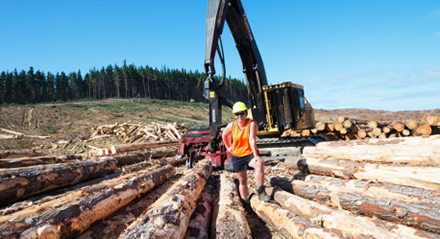After a year of uncertainty, New Zealand’s job market came out of 2020 looking considerably better than expected, according to analysis of over 55,500 vacancies listed on Trade Me Jobs for the quarter ending 31 December 2020. Forestry was one sector that showed significant growth. Source: Timberbiz
Trade Me Jobs spokesperson Matt Tolich said in the final quarter of 2020 the number of job listings nationwide was relatively flat, down just 1% when compared with the same time in 2019.
Mr Tolich said it was the provinces that had the strongest end to the year with 12 of New Zealand’s 15 regions seeing an annual increase in job listings.
“The biggest year-on-year listing increase was seen in Manawatu/Whanganui where listings were up by 32%. The region’s largest district, Palmerston North, saw a 26% increase in listings.
Other regions that saw substantial listing increases were Nelson/Tasman, Northland and Taranaki, with Q4 listings all up 18% year-on-year. The only exception was Otago which saw listings dip 9%.
“Listing numbers were not the only sign of market stability last quarter. We also saw a 2% year-on-year increase in the national average salary, which rose to NZ$63,177,” Mr Tolich said.
He said the job market had kicked off 2021 in great shape.
Auckland was hit the hardest in the last quarter of 2020 with job listings in the region falling 15% on the same time in 2019, while listings in Auckland City were down 19%.
Following Auckland’s trend, job vacancies in Wellington were down 3% on the year prior.
Despite seeing an overall drop in job listings, the Wellington region saw a 3% increase in its average salary when compared with Q4 2019.
Mr Tolich said a number of sectors showed significant growth last quarter, with the biggest
year-on-year increases seen in property (up 20%), fishing and forestry (14%), automotive
(13%) and manufacturing and operations (12%).
Mr Tolich added that the lack of overseas workers was making it tough for some sectors to find talent.
“While sectors like fishing and forestry typically experience a seasonal jump in Q4, in 2020 with no overseas workers to fill these roles, employers were forced to look locally, and this is contributing to some big jumps in job listings.”
Mr Tolich said all five of the top-paying roles onsite were in the IT sector in Q4.








